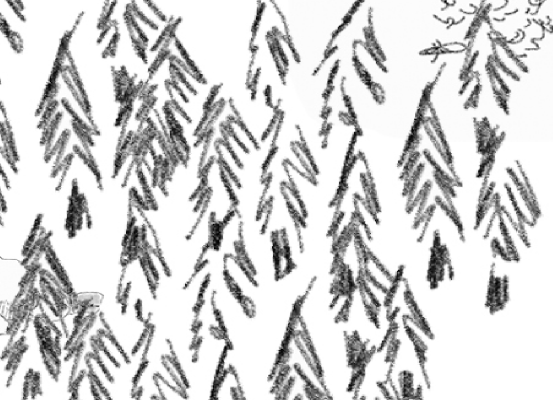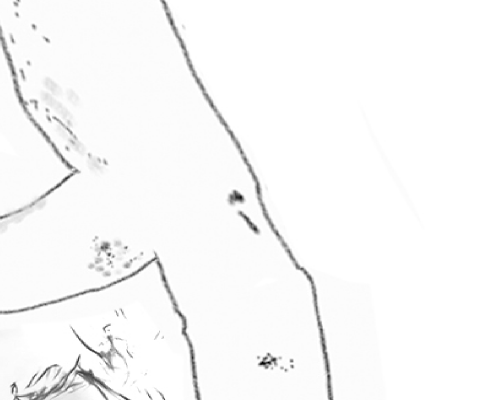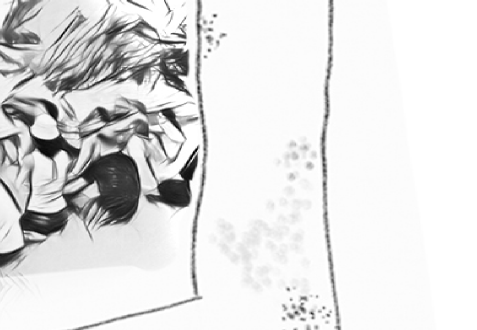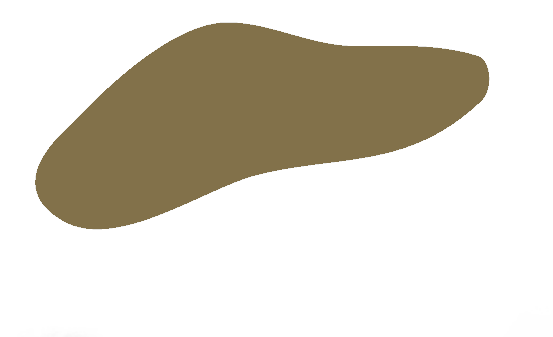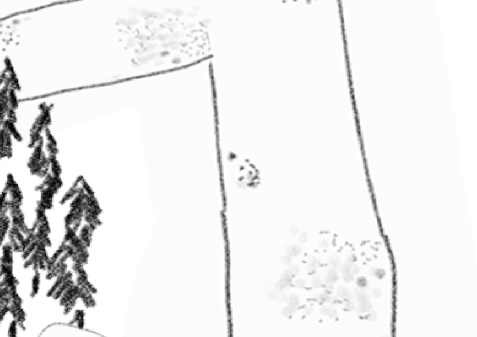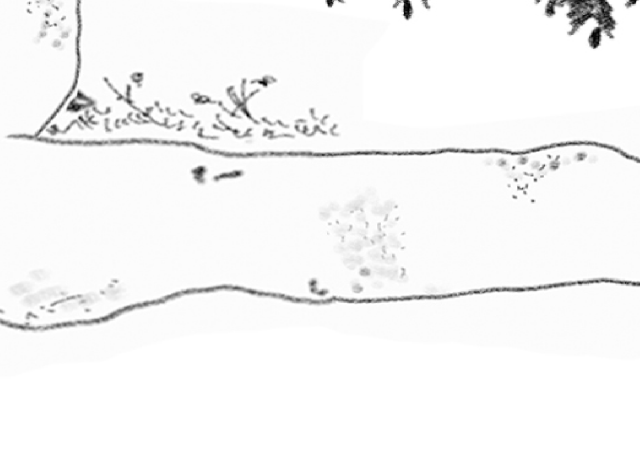Module - Learning scenarios
How to plan a lesson including storytelling?

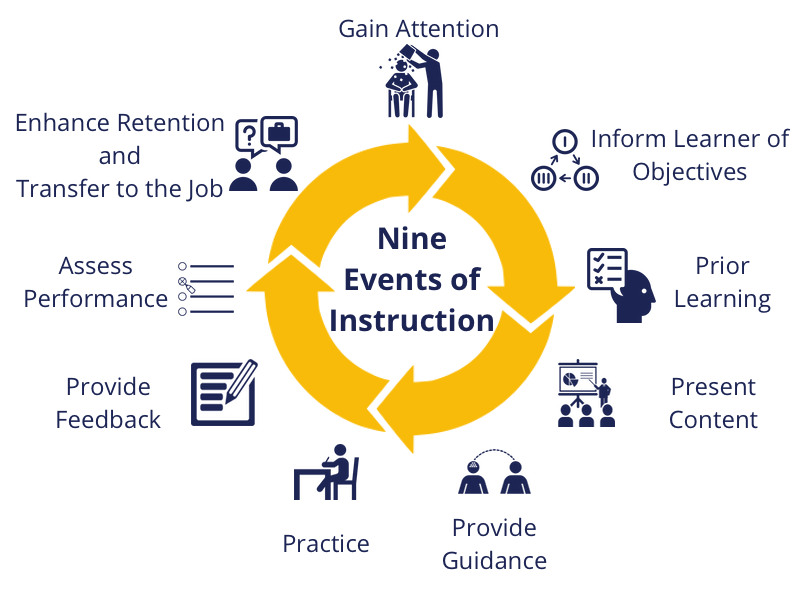 Gagne's Nine Events of Instruction by CourseArc is licensed under CC BY 4.0. www.coursearc.com ▾
Gagne's Nine Events of Instruction by CourseArc is licensed under CC BY 4.0. www.coursearc.com ▾
As you will see, storytelling can be used in more or less all steps of lesson design. How and for what purpose you use it in a particular lesson is, of course, up to you. This paragraph is not meant to imply that storytelling should always be used everywhere, just because that would work. Rather, it is meant to show how versatile this method can be and how it can expand your repertoire of methods for varied lesson design.
1. Gain attention of the learners
Provide an initial stimulus related to the topic/lesson to capture learners' attention, involve them by picking up from their own experiences and activate them for your journey of learning. Possible implementations with storytelling:
- Present a story, a case study, current news or events, a problem to be solved in order to generate curiosity, uncertainty, surprise .
- Utilize an icebreaker activity, for example, with collaborative storytelling as a group (the trainer explains the rule for the story, for example elements/events that must occur, and says a first sentence; learners add one sentence each and develop the story together)
- Ask learners questions that stimulate their memories, experiences and own stories
2. Inform learners of objectives - find and define
Let learners know what your intention and goals are with this course or lesson. Find out what they expect from the course, what they want to experience, learn, be able to do. In this way you can define common objectives and also help your learners to prepare mentally for what they are about to see, hear and/or do. Possible implementations with storytelling:
- Storytelling can be used here in that the lesson is seen as a path, a journey, and in this step the roadmap, the destinations, the treasure map for it is develope together, which you can refer back during the lesson.
3. Stimulate recall of prior learning
Help your learners to link the new knowledge with existing knowledge by recalling what they have already learned or experienced. Possible implementations with storytelling:
- Use a story to summarise what you have learned before. For example, if it was about historical events, you can tell them from the personal point of view of a contemporary witness, thus making the abstract concrete and thus repeating it. Or if it is about a physical/chemical context, you can tell how you carried out a corresponding experiment.
- Involve the learners in this story by interrupting the story and asking what happens or could happen then.
- Use a story to lead up to the topic. Example: In the story "The elves" by the Brothers Grimm, a simple quantity is doubled every day (1st day: leather for 1 pair of shoes, 2nd day: leather for 2 pairs of shoes, 3rd day: leather for 4 pairs of shoes, etc. ... until the cobbler is rich). You can interrupt this story in the series and work out together with the participants how the amount of leather develops (in order to trigger existing mathematical knowledge and its practical use). Then finish the story and move on to calculating with quantities.
- Let the learners develop a story together (tell in turn, one sentence each) according to your instructions. In language lessons, for example, you could specify that the vocabulary from the last lesson should appear in the story. Or that the story should be told in a certain tense. If the focus is more on writing/reading words, ask learners to remember a word from the last lesson and write it down. All the slips of paper are shuffled and distributed and the narrator has to put the word on his/her slip of paper into his/her sentence of the story.
- Use specific questions to stimulate your learners' memories that are relevant to a topic. For example, if your topic is moral courage, you could ask questions about the last time someone experienced or observed an unpleasant situation in public, something where he/she would have liked to intervene. If your topic is moving events in recent history such as September 11, 2001 in the USA, you can give learners a moment to remember when, where and how they heard about this event to take them back in time a little.
4. Present the content
Use as many different methods as possible to appeal to all the senses and to suit the different types of learners. Address not only the cognitive but also the emotional side of the learners for sustainable learning.
- Tell a story that involves a problem you want to focus on, a conflict, multiple perspectives on an issue.... to pick it up afterwards and deepen it with the participants.
- Tell a story that includes the knowledge you want to impart. In language lessons, for example, it is possible that colourful market hustle and bustle is an essential part of your story and you include the goods and/or the conversation between buyer and seller in the foreign language you are teaching. For example, if your topic is organic animal husbandry, you can tell the different "biographies" of animals from industrial and organic husbandry in stories.
- Are there people who could tell their personal story/experience to lead to the topic? Invite them to tell their story in order to enter into a deeper discussion and/or engagement with the topic.
- Make participants' personal biographies/experiences part of the content and guide them to tell their stories. On the one hand, the focus can be on the content, e.g. on the participants' own experiences with racism or sexism, which will be dealt with later on. Or the focus can be on the linguistic means of expression (vocabulary/ tenses/ phrases). Or the focus can be on further processing, for example in literacy courses. The participants tell each other a short episode in pairs, for which you set a thematic impulse. The task afterwards can be, for example, to write down the essential information from the partner's story in own words (capture main information, write down key points).
- Develop a story together with the participants, for example the utopia of a world in which oecological sustainability stands above all other social interests. You set the initial impulse (for example, the year in which the utopia is set, the formal conditions, perhaps the "Only Green Matters" law that will then apply, as well as the protagonists and/or a starting situation). Afterwards, the ideas developed in the story can be discussed, for example, in terms of their feasibility in the present and the potential disadvantages of such a world.
- Storytelling can be used here in that the lesson is seen as a path, a journey, and in this step the roadmap, the destinations, the treasure map for it is develope together, which you can refer back during the lesson.
5. Provide learning guidance
Advise learners on strategies to help them learn content and on available resources. In other words, help learners learn how to learn. Or in terms of storytelling, help learners to build and structure a story, to create it using verbal skills, to memorise it or write it down.
- .
- Prepare a simple scheme that illustrates the structure of a story or the "ingredients of a story".
- Prepare a set of questions/impulses that can be used to drive the development of a (jointly) developed story.
- Provide support or resources if learners are stuck because they are missing vocabulary or are unsure of how to use tenses or how to spell words.
- Create a trusting, safe atmosphere where participants dare to share personal information. Set a good example.
- Encourage learners to share their ideas/experiences/stories.
6. Elicit performance (practice)
Allow learners to apply knowledge and skills learned.
- In a language course, tell your learners a story with the aim of practising their listening comprehension and understanding certain vocabulary and/or information and/or contexts.
- Let the learners (together) develop a story. In a language course, for example, it is possible to use the newly learned material ( vocabulary/ phrases/ tenses) in a story, which is told sentence by sentence, by setting the rules for the joint storytelling. If media use in the family is the topic, typical problems around media use in everyday life could be addressed and ideas for solutions presented in a joint story or in stories developed in pairs - according to the previous input, for example, about the advantages and disadvantages of certain media use practices.
7. Provide feedback & 8. Assess performance
Give learners direct and immediate feedback to support them on their learning journey, encourage them and give them opportunities to identify and close gaps in understanding. Feedback can be given in many ways: to the whole learning group (good practices; typical mistakes...), to the individual learner or peer to peer. The way of assessment depends very much on what has been set as common learning objectives at the beginning. If the primary objective was to impart concrete knowledge, there are a variety of proven assessment methods, such as exams/quizzes, written assignments, projects, etc. If it was more about raising awareness of a topic/issue, it is more about feedback from your learners than actual assessment.
- Give an assignement to the learners: Give the beginning of the story and ask the learners to finish it, including vocabulary/ notions/ lessons learned before. Start the next course by telling the story one of the learners told you or ask the learners to tell the story. Give feedback on the way they integrated the lesson's content in their story.
- Go back to the roadmap of your learning journey that you developed together at the beginning and review the journey. What was particularly exciting, surprising, interesting? Where were there particular hurdles and challenges to overcome? Where were there surprising prospects? On the individual level: Who was a particularly pleasant companion, with whom was the path easy to manage and why?
8. Enhance retention and transfer
Help learners to embed their new learning and connect it to previous knowledge/experiences, future actions and/or their personal background and everyday life.
- Finally, tell a story in the context of your topic in which a relevant problem is solved - perhaps in a way that you have worked out in the lesson, but perhaps surprising, unusual, extraordinary. Or tell a story that transfers your lesson topic into the concrete, into everyday life, into the future.
- Finish telling a story that you have started in an introductory way.
Retrieved from www.niu.edu ▾ Gagne, R. M., Wager, W.W., Golas, K. C. & Keller, J. M (2005). Principles of Instructional Design (5th edition). California: Wadsworth.
 |
Here you'll find concrete learning scenarios with Storytelling in Basic Education ▾ |
Here you'll find concrete learning scenarios with Storytelling in Civic Education ▾ |
 |
 |
 |
 |







